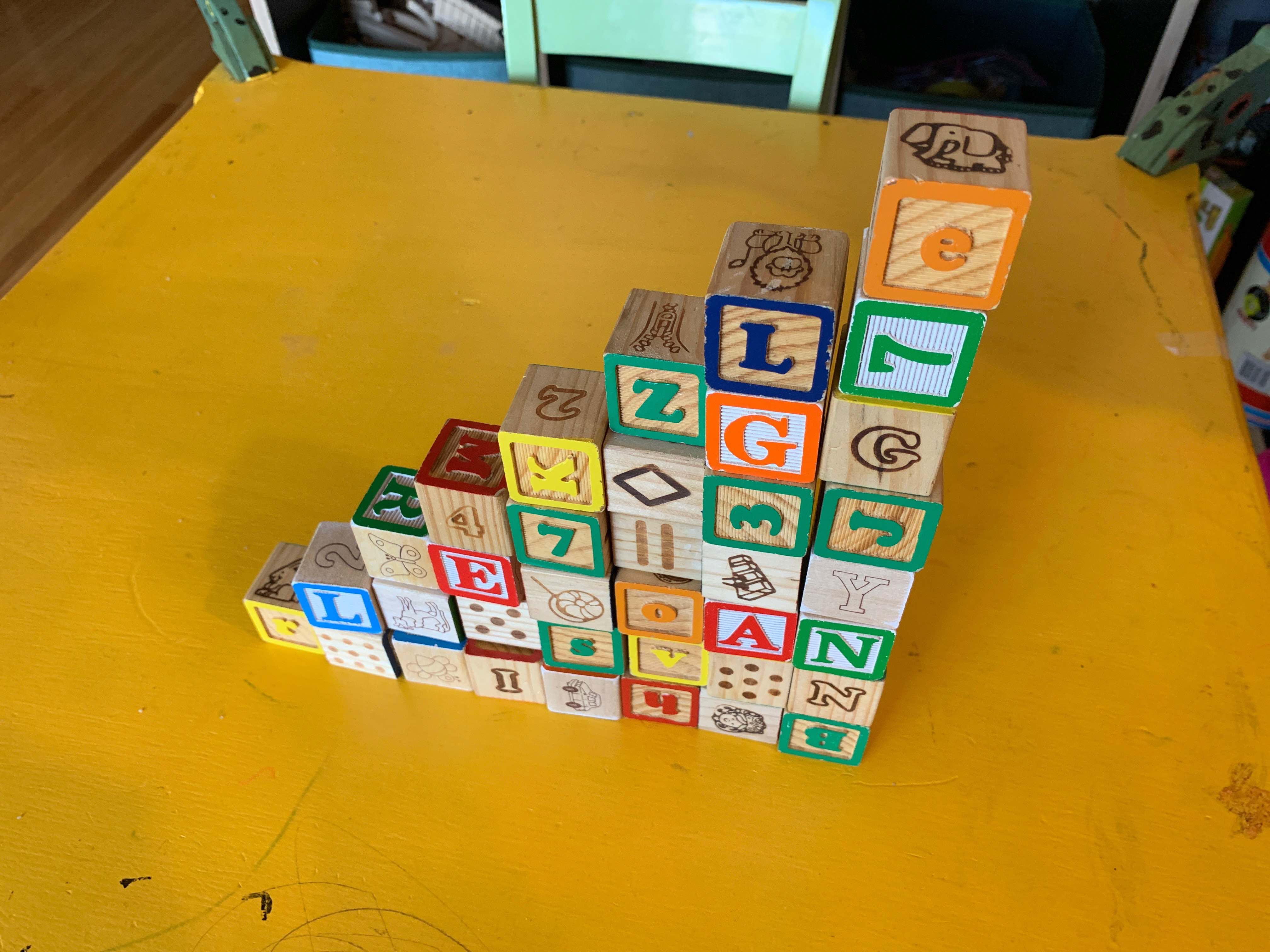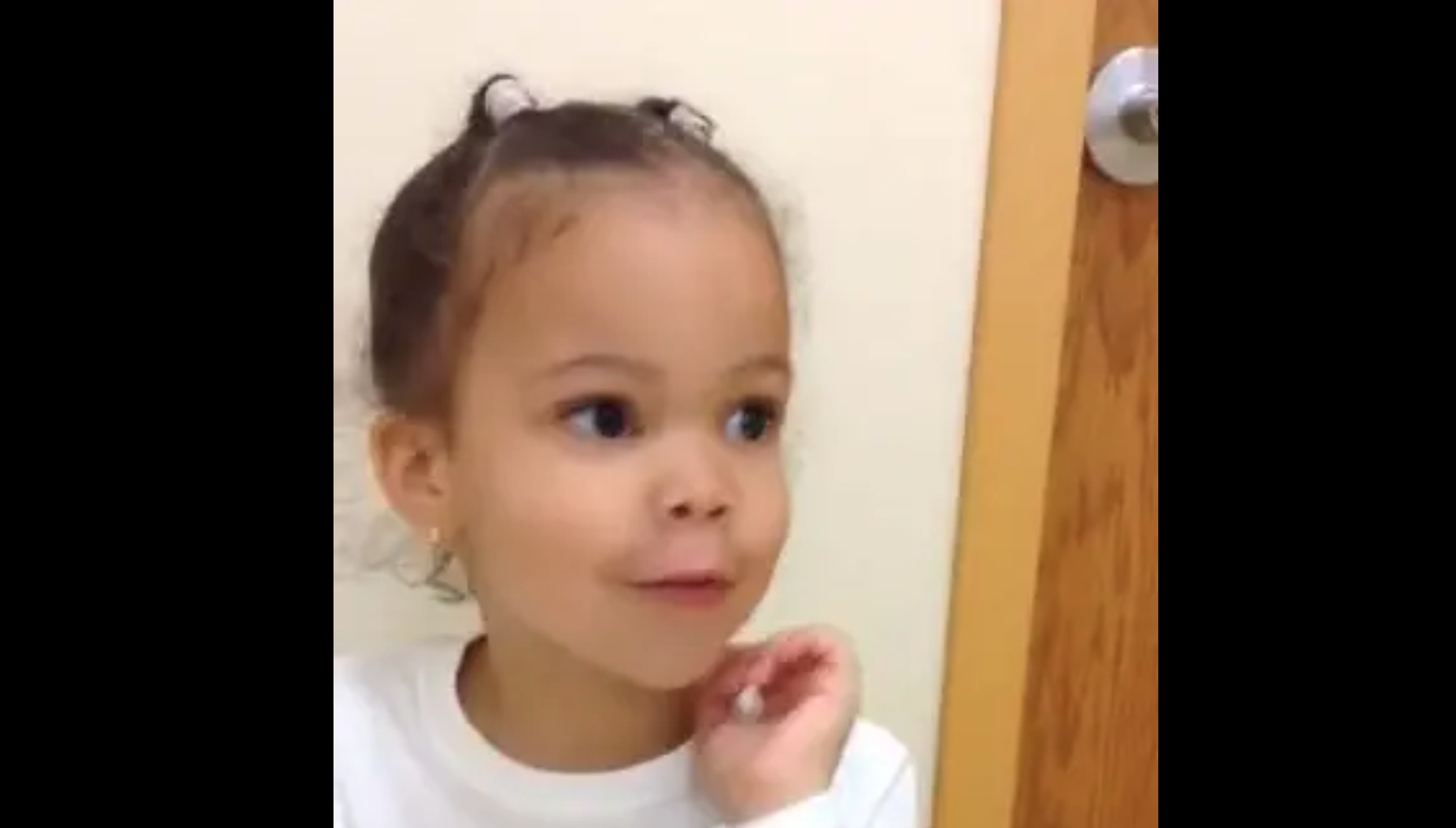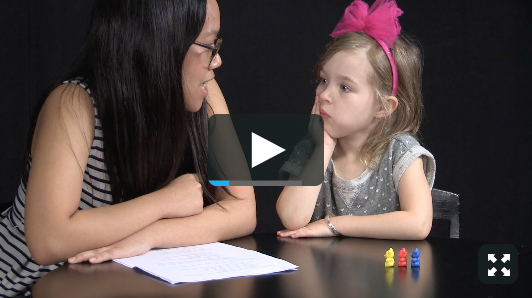There are all types of patterns. This handout describes a variety of these patterns and how to assess children’s increasingly sophisticated knowledge of this important mathematical domain.
Diane begins by removing the interviewer’s blocks; she does not need to see the original pattern in order to extend it. It's interesting to listen carefully to what Diane says as she creates the pattern. Each time, she emphasized the word yellow and then follows it with a softer intonation of purple. One possible reason for this is that she saw YELLOW–purple as a basic pattern unit to be repeated (AB) and that she was not simply alternating yellow and purple (A, B). Both strategies lead to successful extension of the pattern, but alternation (A, B, A, B…) and repetition (AB, AB…) are different mathematical ideas. (Note that alternation works only if two units are involved. If there are three or more, as in the case of AAB, you must repeat the basic set AAB to continue the pattern.)
At this point in the interview, Ben was finishing the pattern closer to him. I then asked him to close his eyes. Identifying the missing element is very different from continuing a pattern. Ben could find what was missing in at least two ways. One would be simply to remember what was in the missing spot and the other, to analyze the sequence of elements within the pattern. Ben seems to solve the problem not by memory but by reasoning that since there are two birthday hats, a frog has to be in the middle.
The explanation is short but not entirely sweet. A pattern “…has the same thing.” Although minimal, her definition did express a beginning awareness of the pattern’s essence, namely that it repeats.
Here’s another example. After Diane created her long pattern, Diamond asked her, “Can you tell me how you knew what to do?”
Like Meredith, Diane essentially repeats the statement that the blocks form a pattern. Both children show us that explanation of a pattern is by no means easy, as is the case with adults too.
Equivalent patterns
Finally, let’s consider a more abstract task involving simple patterns. An alternating pattern involving dogs and basketballs was on the table, and I asked Ben to make a similar pattern using the new elements, frogs and party hats. “Can you do it the same way like this [the dogs and basketballs]?
Ben carefully constructs the alternating pattern, extending it as far as is possible given the number of cards. He uses the same rule of alternate elements to create the party hats and frogs sequence that was used to create the dogs and basketball arrangement. For him the alternation rule is abstract: it is not limited to specific objects.
Meredith was also able to do an equivalent pattern, this time involving ABB ABB.
To solve the equivalence problem, both Ben and Meredith had to think abstractly. They had to realize that two patterns can be the “same” even when they differ in appearance. Abstract thinking involves going below the surface to discover an underlying rule or structure. Of course, there are limits to young children’s abstract thinking. What would have happened if Meredith had been asked to create the same pattern with blocks and dolls? The differences between the blocks and dolls are so great that she may not have been able to solve the problem. Despite this, when they created equivalent patterns, Meredith and Ben used at least the beginnings of abstract thinking.
Summary
Even simple patterns, like ABAB, are more complex than we usually think. To understand a pattern, children have to:
- extend it,
- analyze it,
- explain it,
- and create equivalents.
Each of these involves thinking, and explanation involves language, too. Even more interesting and complex are Patterns of Counting Words.



